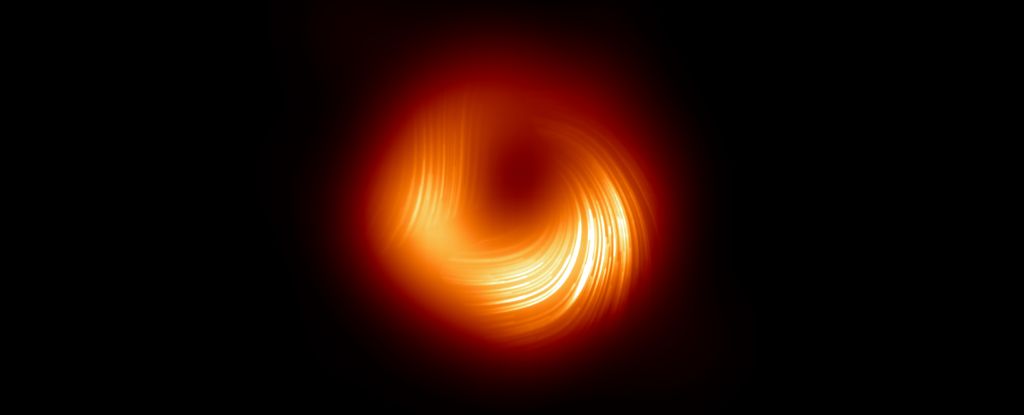
Recent observations of the supermassive black hole known as M87* have revealed extraordinary changes in its magnetic field, a phenomenon never before documented. Data collected by the Event Horizon Telescope across multiple years—specifically in 2017, 2018, and 2021—illustrates significant shifts in the polarization of the magnetic field surrounding this cosmic giant. While M87* itself remains stable, the environment outside its event horizon is experiencing dynamic and unpredictable activity.
The black hole, located approximately 55 million light-years from Earth, possesses a mass about 6.5 billion times that of the Sun. Initially imaged in 2019, M87* has since become a focal point for researchers aiming to understand the mechanics of supermassive black holes. The latest findings indicate that between 2017 and 2021, the magnetic field around M87* underwent a complete reversal—a groundbreaking observation in black hole studies.
Mapping Changes in Magnetic Fields
The Event Horizon collaboration has conducted comprehensive studies to track alterations in the mass of hot material swirling around M87*. Their focus on light polarization has proven particularly revealing. When light travels through a highly magnetized area, its wave orientation becomes aligned. Although the visual images of M87* may not appear to change significantly over time, the polarization data uncovers dramatic variations.
In 2017, the magnetic field appeared to spiral clockwise, while by 2018, it shifted to a counter-clockwise orientation and displayed signs of stabilization. By 2021, the magnetic field again spiraled counter-clockwise, indicating a remarkable dynamism in the magnetic fields surrounding the black hole.
According to Paul Tiede of the Harvard & Smithsonian Center for Astrophysics, “What’s remarkable is that while the ring size has remained consistent over the years—confirming the black hole’s shadow predicted by Einstein’s theory—the polarization pattern changes significantly.” This observation suggests that the magnetized plasma near the event horizon is anything but static; rather, it is fluid and complex, challenging existing theoretical models.
Implications for Cosmic Understanding
The findings underscore the role of magnetic fields in the formation of jets emitted by black holes. As material accumulates around a black hole, it often forms a disk. Not all material spirals into the black hole; some is diverted along magnetic field lines, propelled to the poles and expelled into intergalactic space at nearly the speed of light. These jets can extend for millions of light-years and play a crucial role in shaping the evolution of their host galaxies.
Eduardo Ro, an astronomer at the Max Planck Institute for Radioastronomy, explained the importance of these jets: “By regulating star formation and distributing energy across vast distances, they affect the life cycle of matter on cosmic scales.”
The research published in Astronomy & Astrophysics reveals a turbulent and ever-changing environment surrounding M87*, showcasing how dynamic magnetic fields can dictate the flow of material. Future observations are planned to further explore these magnetic phenomena.
As noted by Remo Tilanus from The University of Arizona’s Steward Observatory, the Event Horizon Telescope is set to advance this field with an ambitious series of rapid observations planned for March 2026. Tilanus expressed enthusiasm about the upcoming project, stating, “We are excited to be gearing up to capture the first movie of M87*, something that has been on our wish list ever since that first image of a black hole.”
These ongoing studies aim to deepen our understanding of the complexities surrounding supermassive black holes and their significant impact on the cosmos.






